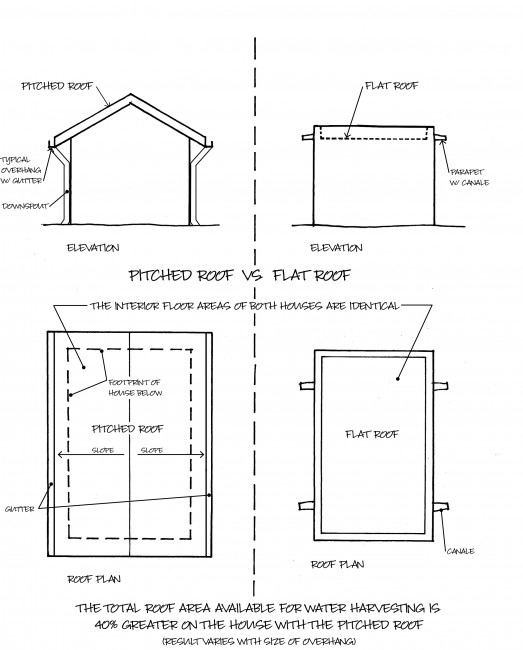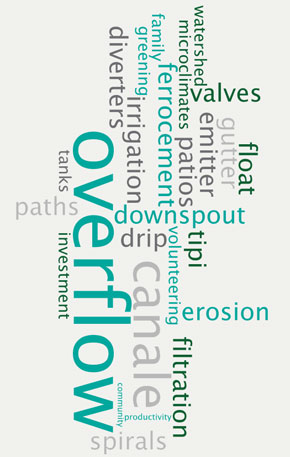The PermaDesign Weblog, with Nate Downey and Melissa McDonald!
Roof-Reliant Landscaping™ Step 15A: Water Collection - The “Pitch” for Pitched Roofs
When it comes to rainwater harvesting in New Mexico, the major question concerning your roof is whether it is pitched or flat.8 Pitched roofs are slightly more efficient than flat roofs for water harvesting, but flat roofs are quite suitable surfaces for rainwater collection as well.
The “Pitch” for Pitched Roofs
When it comes to harvesting precipitation, pitched= roofs provide a cleaner resource than flat roofs because less debris accumulates on them. Flat roofs have parapets that prevent debris from being blown or sliding off the roof. When significant storm events occur, anything on a pitched roof will quickly wash away, while at least some portion of the debris on a flat roof is left behind to slowly decompose on the watercollection surface.
Many materials used in flat roofs leach low levels of toxic chemicals, but as long as your cistern is locked and marked “nonpotable,” this should not be a problem.9 Plants should thrive as a result of being watered by your harvested precipitation.
Pitched roofs collect a greater amount of precipitation than flat roofs for the following reasons:
1. Less precipitation evaporates off of pitched roofs than off of flat roofs because the angle of a pitched roof directs precipitation more immediately to the conveyance system. Since the precipitation landing on a flat roof moves much more slowly than that landing on a pitched roof, the sun, wind and ambient air have an increased amount of time to cause evaporation.
2. The gravel that is typically part of a flat-roof system prevents rain and snow delivered from light-precipitation events from making it to the system’s conveyance piping. Water is inhibited from flowing toward the initial conveyance points, and the gravel, with its multiple surfaces, causes significant evaporation, especially when conditions just prior to precipitation were hot and dry.
3. Given an identical building footprint, the square footage of a pitched roof is typically larger than that of a flat roof. This is due to the overhangs associated with pitched roofs, which add catchment area.
4. The conveyance system for a pitched roof is usually slightly less expensive to install and slightly more efficient at transporting water than that of a typical flat roof. (This will be made more apparent in Chapter 8, Water Conveyance.)

01/13/2016 | (0) Comments










Comments